The basic troop choice of a Tau army and exemplars of their strategy of “if you throw enough S5 at anything it’s gonna die,” the Strike Team! Click to read the updatedpost-CA2018 version, or check out the Tactics Corner for more reviews and strategies.
Overview
Strike Teams– formerly just “Fire Warriors” in some previous editions- are the basic unit of troops for the Tau army and consist of their rank-and-file members of the Fire Caste who have yet to advance to a more specialized position. Strike Teams can be deployed either on foot or supported by a Devilfish armored troop transport, but in either case are used as a mobile firepower element to encircle and overwhelm enemies- the Tau do not practice static defense in any but the most desperate of cases. Armed with technologically-superior equipment to even the most advanced of the other races, Strike Teams go into battle knowing that they are supported by the best the Tau race has to offer.
Strike Teams give us a baseline standard to use for Tau models, and it is a relatively decent one to start from- though not without weaknesses. In many ways it is reminiscent of a Guardsman’s, though with improvements in a number of relevant places. Movement 6″ means that they can keep pace with most other foot troops in the game, while strength and toughness three mean that they start from a relatively weak position when it comes to wounding or being wounded by other models. Weapon skill 5+ is, of course, pretty abysmal, but you hardly wanted to be in close combat with Tau anyways; ballistic skill 4+ is a bit better, but is definitely lower than we’d like for a faction that relies entirely on shooting. With 4+ armor and leadership 6, Strike Teams end up being surprisingly resilient overall, though they will of course fold up if hit with significant firepower- they’re still just basic troops, after all.
Strike Squads come in units of five to ten models, with one model in the squad being able to upgrade to a Shas’ui (sergeant), gaining +1 leadership and +1 attack. At 7pts each, they are quite cheap given how much you can get out of them.
Special Rules and Options
Strike Teams come with a surprising plethora of special rules given their status as such as basic unit, even ignoring the Sept bonuses. They have For the Greater Good, of course, allowing them to support nearby units with overwatch fire, as well as Bonding Knife Ritual, which means that any result of ‘6’ on the die for a morale check means the test is passed automatically- which ends up giving them some of the better morale of basic units in the game, as in many cases it will simply be impossible for them to fail a check unless the whole unit is wiped out.
In terms of equipment each squad member comes with a Pulse Rifle (30″ S5 AP0 Rapid Fire 1) for their standard armament, which is a pretty great weapon to have. While it might lack the AP of some other “top-tier” basic amaments, the extended range and higher strength are both pretty big advantages to have and weight of saves can do a tremendous amount of damage when you really focus on a target; wounding T8 on 5s is no small feature, either. They also come with Photon Grenades, which deal no damage but give any infantry unit struck -1 to hit for the remainder of the turn; they’re only really useful on overwatch, but combined with your decent armor save it can mean a surprising number of models will live through an enemy’s attacks. Note that Photon Grenades have a range of 12″, significantly better than most grenades.
Any member of the squad can take a Pulse Pistol (S5 AP0 Pistol 1) for 1pt, though I wouldn’t recommend doing so- it’s not as if you’re going to ever wanting to stay in close combat, so it’s not really worth paying any amount of points for. Similarly, you can swap out your Pulse Rifles for a Pulse Carbine (18″ S5 AP0 Assault 2), but since it is inferior to the Rifle in 99% of situations it’s not a good swap at all- maaaaaybe in a Vior’la army that wants to stay really mobile, but even there your Rifle is probably going to be better. A Shas’ui can also take a Markerlight for 3pts, which is a solid option if you have a few points laying around- but don’t feel as if it’s a mandatory choice, as a lot of the time you want the squad to be on the move, which will significantly impact its reliability.
A Strike Team can be accompanied by up to two drones in the usual fashion, which can include a Guardian Drone (giving them a 6+ invulnerable save) for 8pts; however, since this will cause you to bleed kill points even more quickly, it’s an option you will typically steer away from. It can also have a DS8 Support Turret as part of the squad for 15pts, which comes with either a Smart Missile System (30″ S5 AP0 Heavy 4 ignores cover/LOS) or Missile Pod (36″ S7 AP-1 Dmgd3 Assault 2.) Both of these weapons are cheap enough to be useful, and if you’re expecting to sit your infantry in one place and not move they can be a pretty good buy- the SMS especially is great for shooting over walls at targets you can’t see, while the Missile Pod gives you some utility against enemy vehicles that Tau squads otherwise lack. However, the Turret must be deployed into a static position and can’t be moved once it comes down, which can be a huge limiter for the unit and is the main reason I generally don’t purchase them for my squads.
Uses
Far from its days as a garbage tax on your taking a “real” detachment in earlier editions, Strike Squads have become not just one of the strongest choices in the Tau codex, but actually one of the stronger troop units in the game during 8th edition- there are very few units that can match their raw efficiency of anti-infantry firepower at short ranges, and even vehicles have to give pause when they start taking shots in bulk from Strike Teams.
Most of this comes from the ability of a Strike Team to multiply its firepower threefold at close ranges thanks to the aura of the Cadre Fireblade. With three shots per model within 15″ (or 18″, or even 21″, with the benefit of Borkan Sept and/or a Pulse Accelerator Drone), Strike Teams can put out a hellstorm of shooting that will wound almost everything on 3s or better. Even those T5 units out there (Custodes, Plaguebearers, Bikes, etc) will find themselves in serious trouble against the massed shots of a Strike Team, as they epitomize the Tau specialty of putting out huge amounts of mid-strength shooting that can quickly wear down the enemy’s basic troop units and leave them without much of a board presence remaining, a bad situation to be in for any army. Add in some of the other buffs you can potentially get (including Markerlights and Focus Fire) and you can expect to vaporize most enemy infantry in pretty short order.
This weight of firepower is great, but what really pushes it over the top is the price- at only 7pts per model, Strike Teams are almost ludicrously cheap. 35pts for a minimum unit, or 70pts for a full-size one is practically nothing, and while they lack the dedicated heavy weapons that many other races integrate into their troop choices (no, DS8 Turrets are not a replacement- we’ll get to those), you can’t fault the sheer efficiency at doing the job they’re designed for. This is further enhanced by the comparatively-good survivability that Strike Teams possess; 4+ armor may not be terribly reliable, but it will shrug off a lot more wounds than people tend to think, and as infantry they can quite easily get cover to bump their save to a 3+; digging a Strike Team out of cover can be a real chore for many opponents, especially since they’re such a low-value target that it often doesn’t even seem worth the trouble. Worse yet, the enemy can’t rely on morale to finish the job for them- not only do Tau have access to some great morale-boosting HQs (like the Ethereal), but even an unaided squad has a nontrivial chance of simply rolling the magic ‘6’ and triggering their Bonding Knife Ritual, even after suffering enough casualties to otherwise wipe the squad. As with Space Marines, it’s usually necessary to kill Tau units down to the last model, which can be extremely obnoxious to deal with.
One also shouldn’t underestimate the value of that 30″ range on the Pulse Rifle, either- it means that Strike Teams can typically reach almost anywhere they need to shoot to with their guns (as they can also scoot 6″ before firing) and can often deploy such that the enemy is forced to come to them in order to get shots off. Just as importantly, it pushes out your Rapid Fire range, allowing them to get their double-or-triple shots off at a greater distance; those couple of inches may not seem like a lot, but they actually can be a really big deal on the tabletop. If you’ve never played with them, you might be surprised at how often 15″ over 12″ will make a difference, and with the Fireblade’s aura giving such a big reward for getting inside that range, it really incentivizes you to close the distance and hit the enemy hard.
Of course, there is a danger to getting in that close, as everyone knows that Tau units are almost comically inept in melee, but that is why Tau units really need to operate in “clusters” in order to maximize the value of For the Greater Good. There definitely is some value in trying to stay out of easy charge range when needed, but at the same time there are a lot of really fast units in the game these days and it won’t always be possible to get away from them- in these cases, better to close in and hit them with the triple-tap rather than fruitlessly move away and get charged anyways. Your strategy against melee should typically be a combination of mobility and firepower- if you can deal out enough damage, you can blunt the enemy’ s offense and make even a successful charge non-fatal to the unit; unlike in previous editions, losing a couple of models to an assault doesn’t spell an end to the whole unit, so anything you can do to mitigate damage is a good thing. Photon Grenades are also very useful here- that minus one to hit might not seem like a lot, but it can really make for a lot less damage coming in and Strike Teams can be surprisingly resilient with their 4+ armor.
But really, at the end of the day the Strike Team is all about the firepower it brings to the table, and that firepower is pretty significant. With the mandatory Cadre Fireblade nearby they can put out some of the most efficient anti-infantry shooting in the game, being as cheap as they are with a wide variety of strong buffs available. The S5 on their guns is also extremely relevant against most targets- it means wounding basic infantry on 3s, sure, but it also means wounding even Knights on 5s, and in combination with Through Devastation, Unity (AP-1 on 6s to wound) you can really rack up some serious damage on most units. This is particularly devastating to things with weak armor saves, such as Orks and their like- although even enemy Guardsmen will be in a pretty bad place when you start dropping 10-20 wounds onto a squad and vaporizing the whole thing, Combined Squads or not.
One option we haven’t talked about much is the DS8 Turret. Although you typically won’t see Tau players using them, there have been a few lists taking them in squads that have gotten up into the top tables, which makes them an interesting conundrum. Having looked at the issue a fair bit myself I can’t really say that I favor them, but at the same time I think they do potentially have some uses- specifically, the one armed with the Smart Missile System does. The SMS is a wonderful little weapon that does a great job of supporting the unit’s primary role, as it will help chew up infantry at range. However, in terms of raw firepower the DS8 Turret isn’t a great choice because it costs twice as much as a single member of the squad (15pts vs 7), but still only has one wound and four shots. While those four shots are great if you’re firing at a target 30″ away, when the enemy gets in close they look a lot less impressive as those two team members you could’ve bought are now putting out six shots versus the turret’s four. Worse, the turret is completely immobile and forces you to stay near it if you don’t want it to be destroyed, which is problematic in a game where maneuvering your units is absolutely critical.
However, there is some potential value to the turret, I think; often times you will have 1-2 squads in your list that are just planning to sit back on an objective, ideally one that is out of line of sight, and spend the whole game hiding there and scoring you points. For squads like these, the DS8 Turret is perfect, since it allows them to contribute slightly to the battle without compromising their role of hidden objective-grabber. I would also be remiss if I didn’t mention the stratagem that allows you to replace a destroyed turret for 1CP; although it might seem a bit unimpressive of a use for your command points, the ability to get models back in a specific squad is quite handy to have and Tau armies typically have an abundance of CP available due to having great HQs and troop choices, so you shouldn’t feel bad about spending them where you can.
I’m not going to go into excessive detail about Devilfish here, because they will get an article all their own, but it is worth discussing their relevant to the Strike Team as a unit. Although the fabled “Fish of Fury” tactic is long since dead- and indeed, never was really all that viable of a way of playing, despite what some people think- the Devilfish can still be very useful to a Tau army. It can help draw assaults away from your Strike Teams as well as get them across the field to where they need to be in relative safety- something that Tau often struggle with, as they aren’t a mobile army. You don’t need to consider taking them mandatory when you’re bringing Strike Teams, but they certainly can be very helpful, so don’t dismiss them out of hand just because they feel a bit pricey.
Strike Teams can benefit from all of the Sept choices for the army, but some stand out more than others. Vior’la is actually surprisingly decent, since it can really keep them moving fast and with a Fireblade in the mix you aren’t losing as much firepower as you might assume when you advance, but generally it’s probably not the right call. Dal’yth is also a lot better for them than for most people- a 3+ save as standard on your guys can make for an extremely tough firebase, but it limits your ability to move (and thus to get in Rapid Fire range) so much that I wouldn’t recommend it overall. No, the two standouts for Strike Teams are the two most obvious choices- Borkan and Tau Septs. Borkan gives that critical 6″ of range, potentially pushing out your reach to as much as 42″ with your basic guys- which is a pretty insane distance. But the king of Strike Teams, hands down, is Tau Sept, for the same reasons that it is the superior sept for almost all other units as well: overwatch and Focus Fire. Strike Teams already want to be traveling in packs (as we talked about just a few paragraphs ago), so the Tau Sept bonus really just doubles up on your firepower when charged- and since you can only even be charged when you’re in Rapid Fire range anyways, that means a LOT of shots coming out. Three basic Strike Squads will put out ~10 wounds (i.e. three dead MEQs) when assaulted- and that’s with no Markerlights, just 105pts of little mans. Just as importantly, the Focus Fire stratagem allows them to wound anything in the game- anything– on 4+s at worst. Most superheavies only have a 3+ armor save, so getting to be almost as efficient when shooting them as you are when shooting Tactical Marines is a very, very dangerous tool to have around- all the more so when you also have Through Unity Devastation active. While the other septs might offer some very useful bonuses that can do interesting and effective things for your army, Tau Sept is easily the overall winner of the race, because it offers you such fantastic abilities in both yours and the enemy’s turn.
Countering
If you’re facing down a horde of Strike Teams on the other side of the table, there are a number of things you can do to make the game easier on yourself. First of all, do not just charge your units straight into their lines unsupported- that is just a fancy kind of suicide, as the sheer volume of overwatch fire you’ll be taking means that you are unlikely to arrive there with sufficient strength to destroy them unless your units are unreasonably tough (e.g. Knights, Vertus Praetors, etc.) You’ll need to weaken their lines and prepare your units to make some canny charges rather than just diving directly into them, and while that may mean you don’t get to assault them nearly so early, it will make a huge difference in the success of your assaults. Remember that they can’t fire overwatch if they can’t see you, so hiding behind terrain or models can be very important; however, also remember that For the Greater Good means that declaring a charge on something that is locked in combat isn’t necessarily safe so long as there are other units nearby, so trying to absorb their overwatch with a Rhino or the like often isn’t going to be enough.
Another important thing to keep in mind is that, for all we’ve talked about their good morale and toughness on the field, Strike Teams are not MEQs and can’t take the same kind of firepower. Weapons like Lasguns and Bolters will put a serious hurt on them if they are caught in the open, as that T3 will make a serious difference in how often they have to roll saves. And while they may have some good anti-morale rules, they aren’t reliable rules, so it’s very possible to earn some bonus casualties come the morale phase; this is especially true with larger units (7+), which are becoming more popular with Tau players these days.
If you have to engage Tau in a gunfight, do so at medium-long ranges where they can’t easily get their Rapid Fire bonuses; at 24″-16″, a Tau gun ends up being pretty similar to a Bolter in a straight shooting fight. Force the Tau player to come to you and they’ve already done a significant chunk of your work for you- especially because that means you can hold in a static position that gives you the benefit of cover, superior firing lanes, etc. Also, keep in mind that Strike Teams don’t come with any significant ways to harm most vehicles; if you can cut away their heavy shooting support (battlesuits, tanks, etc) and leave the Strike Team to fend off your vehicles or monsters alone, they are going to be in for a pretty bad time.
Final Thoughts
Strike Teams have come a long way, from one of the bottom-tier choices in the codex to one of the best ones available; armies based heavily on utilizing them are no longer a complete joke, and indeed can make a fairly good showing at tournaments under the right circumstances (although the Tau codex as a whole definitely struggles against a number of things.) Although they require support from HQs and other units to really function to their full potential, that’s something that is pretty common to a lot of Tau units, as the codex relies heavily on internal synergies to get its work done.
As always, remember that you can get your wargaming supplies at great discounts every day from the Frontline Gaming store, whether you’re looking to start a new army or expand an existing one.

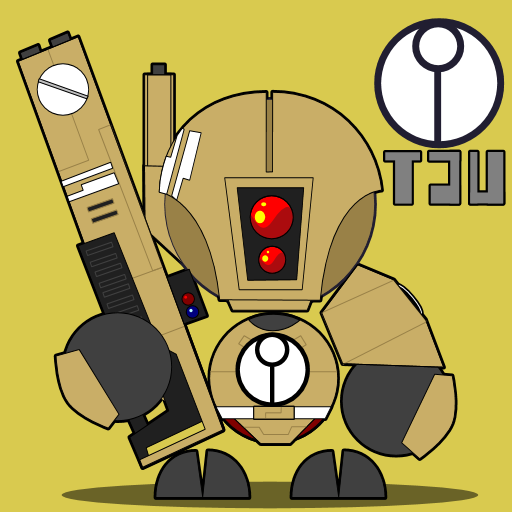
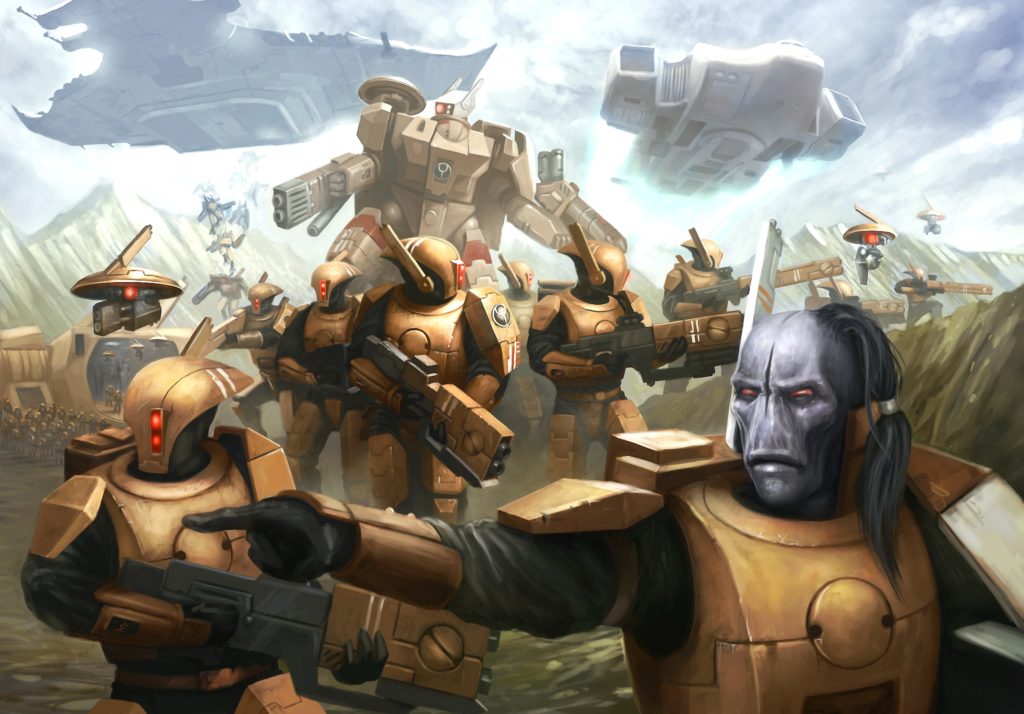
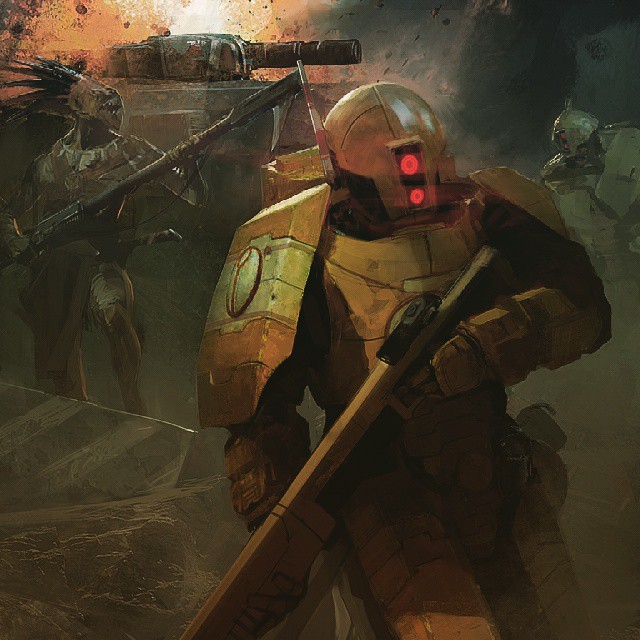
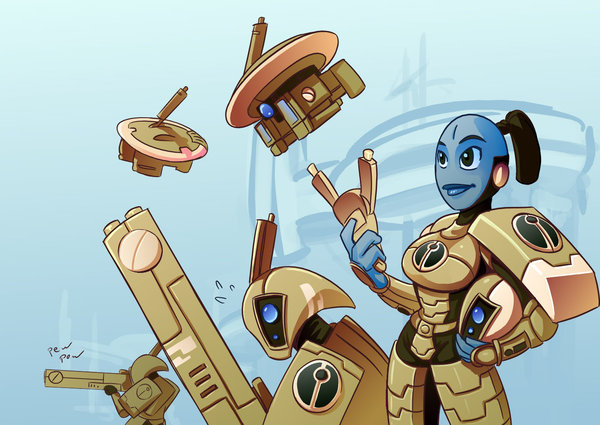
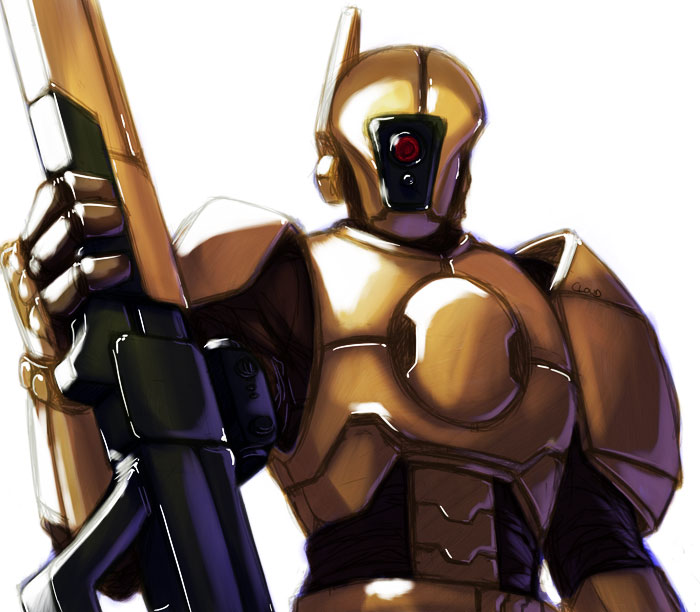
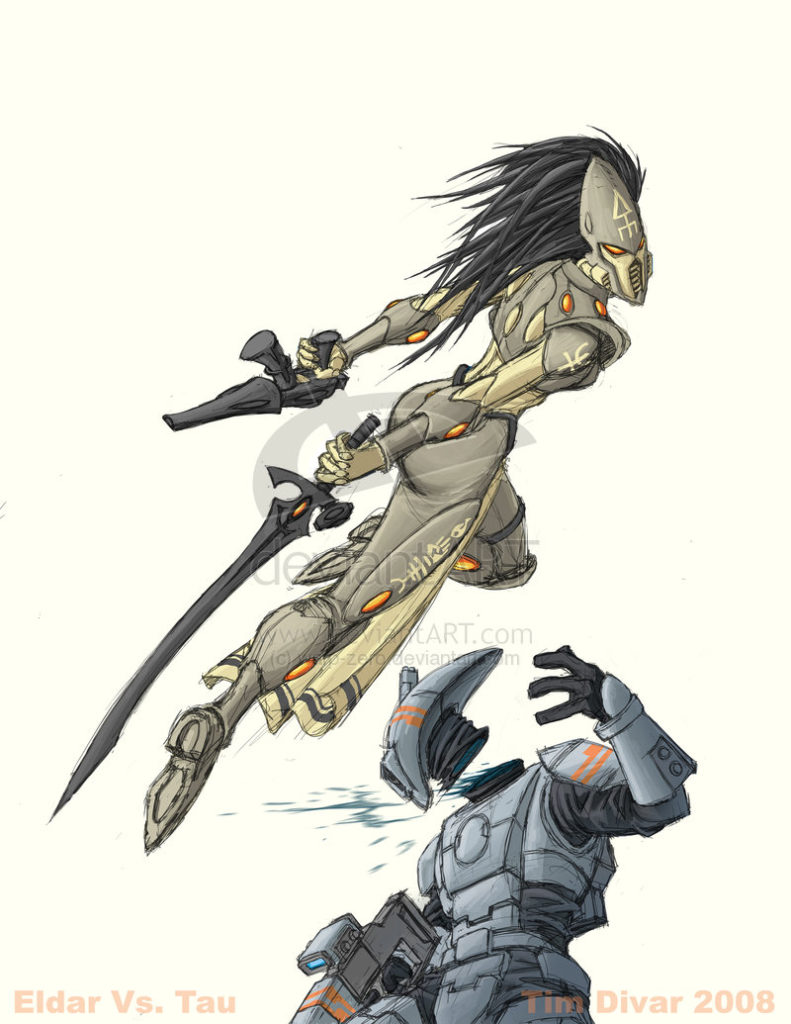
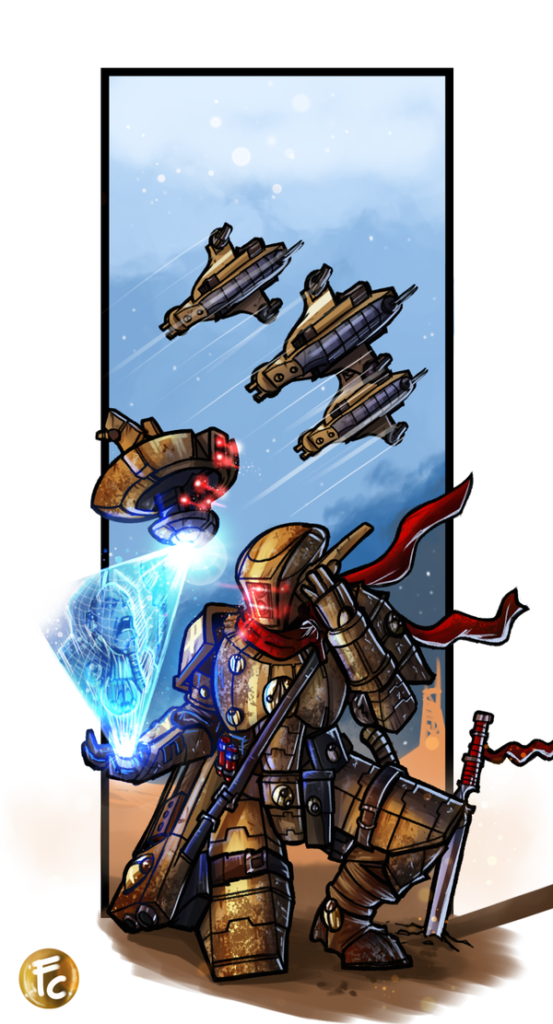
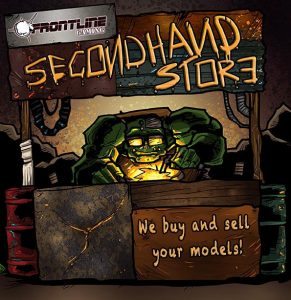
Are you going to review the entire Codex, even with overlaps with the other set of Tau reviews on this site? Either way, looking forward to it. Always enjoy your reviews, amd Tau are my favorite army.
Unfortunately, no, I won’t be doing any “duplicate” articles. I try to add my commentary to the others in the series to fill any obvious gaps that I feel were missed, but for fairly obvious reasons there won’t be two full sets of reviews for the Tau codex.
Thanks for the review.
Fire Warriors (never strikes in my mind..) are great troops! I’d bow to the wisdom of the crowds and say T’au Sept one’s are best, but I’ve had some fun with pulse rifle Vior’la Fire Warriors, Fireblade and Ethereal combo as it makes them surprisingly mobile.
Are Fire Warriors so good though that Kroot are not getting a look in? I assume they will get a separate review of course, but I don’t see many people taking them. Kroot stats and rules on the surface look good for their cost! I think the issue may be that fire warriors are 2pts more a model and for that you get Sept rules + greater good + better stats.
Kroot are definitely not bad, and while they may be fragile that 7″ scout move before the game can be absolutely critical in a lot of matchups. The biggest problem they run into is actually not the lack of Sept rules and whatnot, but the fact that a lot of melee armies these days are really, really good at assaulting into them and wrapping around a single model in order to tri-point it and keep it from falling back from combat. Stealth Suits end up filling a similar role but also benefit from Fly, which allows them to escape such tactics and thus end up a superior choice overall.
I never leave home without my stealth suits, sooooo good. Great multi purpose unit!
So do you think any role exist for kroot then in an army with stealth suits already? Still feels better to have kroot die to smite then anything else I guess and in a lot of other dexes i’d think kroot would sneak in as an option.
Depending on the sorts of armies you see in your meta, Kroot may have some uses- they are a cheaper screen than Stealth Suits, at least, but I don’t typically find myself running them these days (as I’m always happy to slot some more Strike Teams into my troop slots.) But I wouldn’t put them in the wastebin quite yet, as they have the potential to make their way into some armies.
I feel like Kroot can’t compete for the same role as Stealth Teams. Want an midfield objective holder, speedbump, disruption unit, etc.? Stealth Teams do it better. I hate to say that because I love Kroot.
The most likely scenario in which you would want Kroot Carnivores is when you wanted a lot of board control and a lot of chaff, but then you’d be running like 60 Carnivores, backed by Ethereals (for leadership). This represents a lot to chew through, but would also run you ~350 points that will prove pretty easy to kill. I’ve not had much luck running mass Carnivores.
Well, they’re not exactly the same role- Kroot exist largely as a first-turn blocking unit. Turn 1 charges are a significant threat in the meta, even now, and having solutions to them is very important. You simply can’t afford to have a big block of Genestealers- or worse yet something that ignores overwatch, like a Smash Captain- hitting your lines on the first turn if you want to be able to play a good shooting game. Kroot and Stealth Suits are two different solutions to that problem, and although Stealths are typically better, I do think that there is some potential for Kroot to do that job as well (especially as hordes of light infantry gain prevalence, as may happen after the Ork codex drops.)
Great article! I argee with a lot of your points about why Strike Teams are so good. Why don’t you think we’re seeing them much at top tables? On paper, 60-100 Fire Warriors seems like it’d do some serious work, but I’m not aware of a list that’s utilized them to that extent and placed well. Shortcoming of Strike Teams or in T’au in general?
There were a number of ETC/ATC lists that ran large numbers of Strike Teams, but I think the overall issue does come down to one of Tau in general being somewhat lacking against the top-tier lists. Strike Teams do fine at clearing infantry at short ranges, but they don’t handle vehicles very well and they don’t handle firefights at longer ranges well- and both of these we see significant numbers of in the meta right now. Being “tri-pointed” and unable to escape from combat is also a significant danger for Tau infantry, and at higher levels of play it is a very common tactic that can easily lead to the downfall of a shooting army.
60+ Strikes also tends to be present in more “unbalanced” Tau lists that focus on one or two strategies to the exclusion of all others, which is a very risky thing at a GT-level event. So the Tau lists that are succeeding tend to run smaller numbers (30-50), although again that may be something that changes as the meta shifts.
Tri pointing is what hosed me soo much at the BAO. I think the 60+ strike squad is probably not as large a risk as you think compared to everything else we have is a gamble as well.
Strike teams can be up to 12 models. It may be a bit of an edge case but if you intend to really buff a team up the larger team can make the most of that.
The main ways you might want to buff a single unit would be with Darkstrider (T’au sept) or the Hot Blooded stratagem (Vior’la sept). With a Cadre fireblade nearby you could be looking at 36 shots with +1 to wound or 72 shots by through shooting twice.
While MSU is better in most ITC situations it could definitely be fun.
Ah, right, they allow Strikes to twelve for legacy purposes but Breachers only go to ten. Good catch.
I’ve actually run larger squads (8-10) fairly often, as it makes a lot easier to get them in range of auras and slightly mititgates the Tau tendency to give up kill points like candy; I think there’s a pretty valid argument for it these days.
I am eventually going to work on a super infantry list, I think it’s honestly the only answer tau has to what’s going on right now. Because it’s the only thing that’s efficient and difficult to handle (in the numbers I’m talking about)
As it stands, there’s nothing tau do that’s not done by someone else to the same degree (and then done better in the other areas)
Any thoughts on Sa’cea mass five-man sqauds with a markerlight in each? I thought it could theoretically be a potent combo but I wouldn’t be surprised if it’s “out valued” by the likes of the T’au sept.
Anyway: really cool read!
They’re good in their own way- the Markerlight embedded is handy, and obviously I feel that the unit itself is a solid buy. The potential problem you run into is that you lose a lot of value compared to the Tau sept in terms of overwatch and the Focus Fire stratagem.I think you can make a decent army out of Sa’cea as your primary sept, but I don’t think it’s ever going to be as strong as Tau Sept is just because doubling your overwatch is so incredibly powerful and important for an army that has literally no other defense against melee.